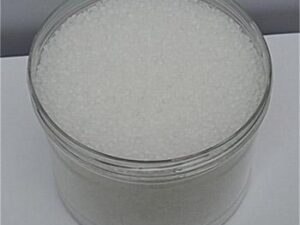Description
Bromoform: More Than Just a Sweet Smell and Potential Carcinogen
Bromoform, also known as tribromomethane, is a colorless to yellowish liquid with a sweet odor, similar to chloroform. While its historical uses were varied and its presence in the environment is a growing concern, understanding bromoform’s properties, sources, and potential health impacts is crucial.
A Brief History and Chemical Properties:
Bromoform (CHBr₃) has been known for quite some time, first synthesized in 1837 by Jean-Baptiste Dumas. It belongs to the class of haloforms, organic compounds containing a single carbon atom bonded to one hydrogen atom and three halogen atoms (in this case, bromine). Key characteristics include:
- Density: Bromoform is a dense liquid, significantly heavier than water.
- Solubility: It is poorly soluble in water but readily dissolves in organic solvents like ethanol, benzene, and diethyl ether.
- Stability: Bromoform is relatively stable under normal conditions but can decompose under intense heat or light, releasing toxic fumes.
- Refractive Index: Its high refractive index makes it useful in certain laboratory applications.
Historical Uses and Current Applications:
Historically, bromoform found applications as a solvent, a fire retardant, and even as a sedative and cough suppressant. However, due to its toxicity and the availability of safer alternatives, these uses have largely been discontinued.
Today, bromoform’s primary uses are limited, primarily to:
- Geological Research: It’s sometimes employed in mineral separation due to its high density.
- Laboratory Reagent: Used in specific organic synthesis reactions.
- Indicator in Density Gradients: Its density makes it suitable for creating density gradients used in cell separation techniques.
Sources of Bromoform in the Environment:
The primary source of bromoform in the environment is chlorination and bromination of organic matter in drinking water treatment plants. When chlorine or bromine disinfectants react with naturally occurring organic materials (like humic substances) present in source water, disinfection byproducts (DBPs) are formed, including bromoform.
Other, less significant sources include:
- Decay of Marine Algae: Certain types of red algae naturally produce bromoform in seawater.
- Industrial Discharge: While rare, some industrial processes may release bromoform into the environment.
- Natural Seepage: In some locations, bromoform can seep from underground geological formations.
Health Concerns and Environmental Impacts:
Bromoform poses several potential health risks, including:
- Carcinogenicity: Studies have shown that bromoform is likely carcinogenic to humans based on evidence from animal studies. Prolonged exposure can increase the risk of liver and kidney tumors.
- Liver and Kidney Damage: Exposure to high concentrations of bromoform can damage the liver and kidneys.
- Central Nervous System Effects: Inhalation or ingestion of bromoform can cause central nervous system depression, leading to dizziness, drowsiness, and even unconsciousness.
- Reproductive and Developmental Effects: Some studies suggest that bromoform exposure may have adverse effects on reproductive health and fetal development, although more research is needed.
In the environment, bromoform is relatively persistent and can undergo long-range atmospheric transport. Its potential for ozone depletion is lower than some other haloalkanes, but its contribution to overall halogen loading in the atmosphere should not be ignored.
Regulations and Mitigation Strategies:
Recognizing the potential health risks associated with bromoform, various regulatory bodies have established limits for its concentration in drinking water. The US Environmental Protection Agency (EPA), for example, regulates bromoform as a total trihalomethane (TTHM) in drinking water.
Strategies to mitigate bromoform formation in drinking water include:
- Optimizing Disinfection Processes: Lowering disinfectant dosages or switching to alternative disinfectants like chloramine can reduce DBP formation.
- Removing Organic Matter Precursors: Filtration, coagulation, and adsorption techniques can remove organic matter from source water before disinfection.
- Air Stripping: This process can remove volatile DBPs like bromoform from treated water.
Conclusion:
Bromoform, once a common solvent and sedative, is now recognized primarily as a disinfection byproduct with potential health risks. While its direct human exposure is generally low, understanding its sources, properties, and health effects is crucial for managing drinking water quality and protecting public health. Continuous research and development of improved water treatment technologies are necessary to minimize bromoform formation and ensure safe drinking water for all. As our understanding of the complex interaction between disinfection practices and water quality evolves, so too must our efforts to mitigate the unwanted formation of bromoform and other potentially harmful DBPs.



















Reviews
There are no reviews yet.